Advertiser content
How to be more certain of controlling septoria at T2
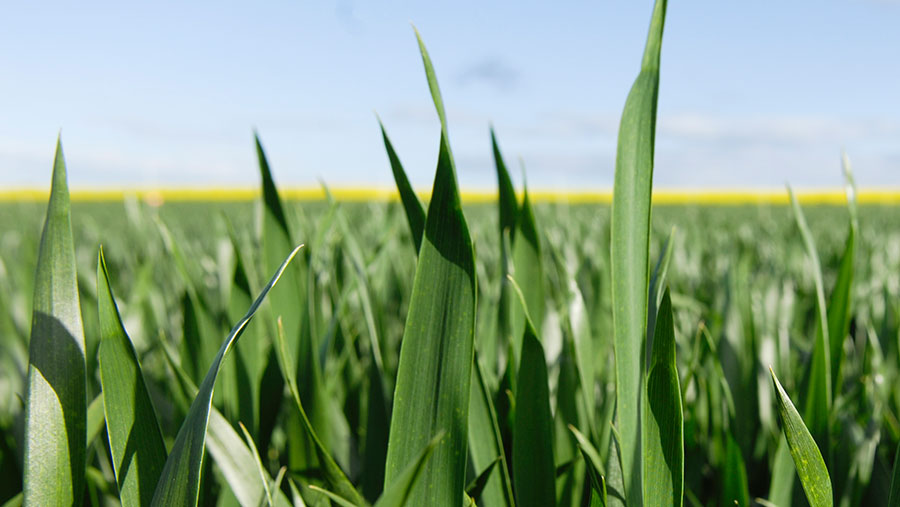 © Syngenta
© Syngenta With the flag leaf regarded as the most important leaf for delivering winter wheat yield, achieving the best possible disease control at T2 is non-negotiable.
Especially given that septoria tritici cannot be cured once it has killed leaf tissue.
Those are the messages from Syngenta disease expert, Joe Bagshaw, who says with the flag leaf contributing about 45% to yield, it is vital not to let septoria take hold.

Getting T2 wrong can prove difficult and expensive to rectify later, says Joe Bagshaw © Syngenta
Moreover, some of the T2 fungicide spray lands on leaf two below, and between them these two leaves provide nearly two-thirds of winter wheat yield, he adds.
“The T2 fungicide is pretty much a point of no return for protecting against large-scale yield loss,” says Joe.
“Get it wrong and it can be difficult and expensive to try to rescue the situation later.
“Remember, disease tends to cycle faster in warmer weather, and there can be two months or more between the T2 fungicide being applied and harvest.
“So there’s plenty of time for disease to intensify, even if pressure at T2 appears low. It’s far better to prevent disease in the first place,” he adds.
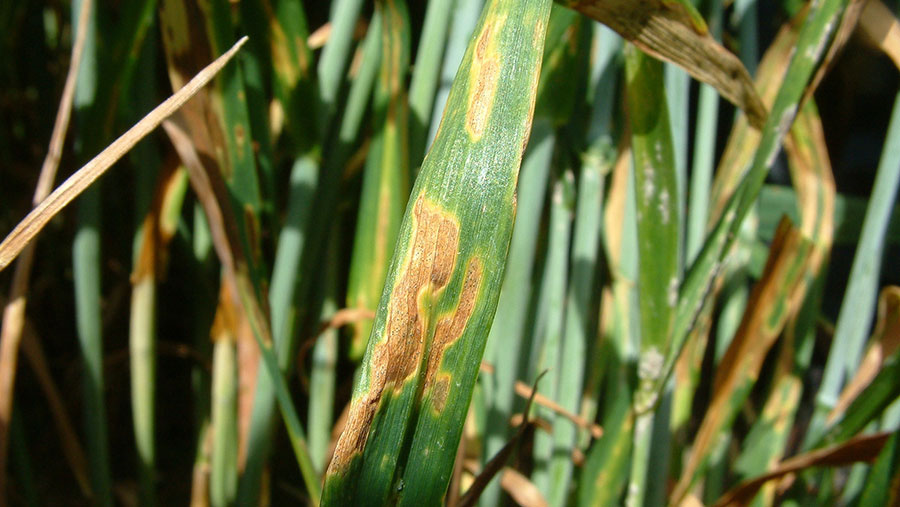
With so much yield coming from the flag leaf, it’s vital not to let septoria rob green leaf area, says Joe Bagshaw © Syngenta
In response, Joe highlights three important areas to focus on at T2:
- Correct fungicide choice – to provide ‘superpower’ disease control but also ‘stamina’ to protect grain-filling
- Correct spray timing – to minimise the risk of disease inadvertently becoming established
- Correct application – to get the fungicide spray where it is neede
1. Correct fungicide choice
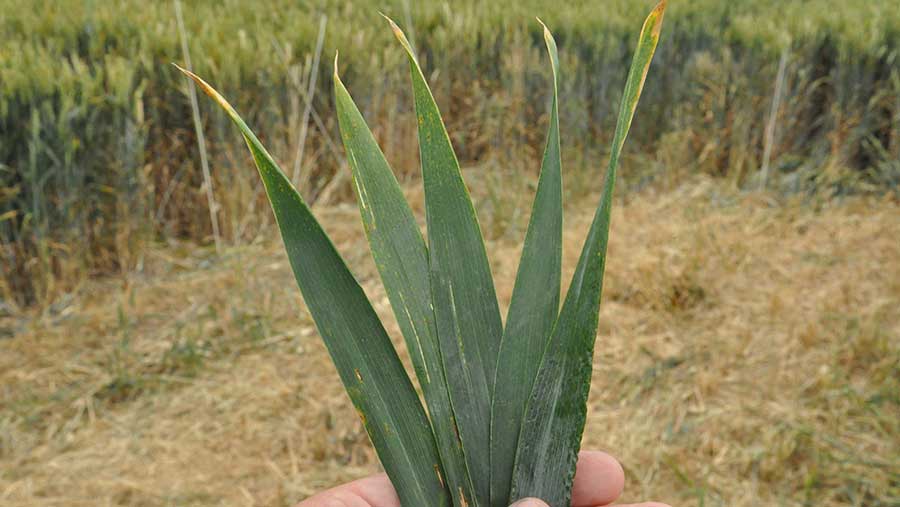
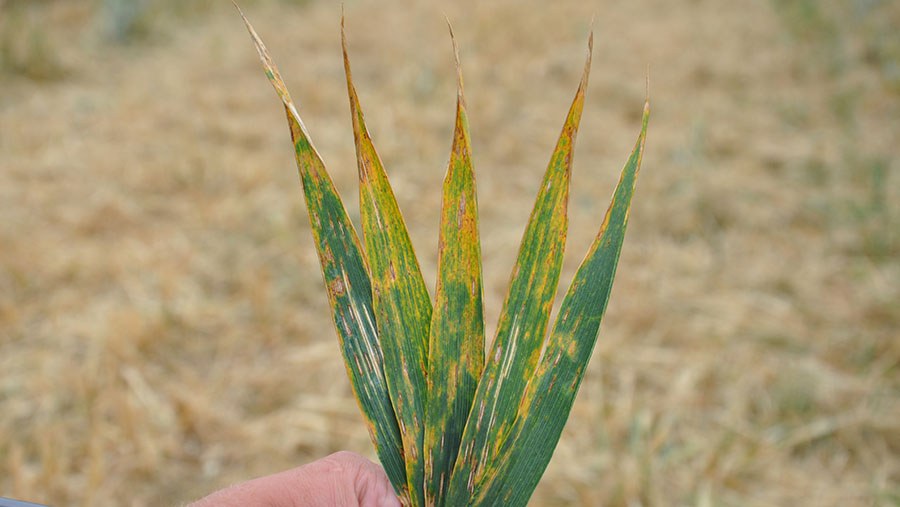
New fungicide Miravis Plus + Era (top) proved itself for protecting green leaf area in 2024, and in earlier years, too © Syngenta
Joe explains that ideally yellow rust should have been dealt with by the T1 fungicide, for example using Solatenol (which is contained in Elatus Era).
For T2, he says septoria tritici is potentially the biggest concern for many growers – in some cases along with brown rust.
“When it comes to tackling septoria tritici, look at the AHDB fungicide dose response curves to see the best fungicide performance.
“The new SDHI Miravis Plus – which is available in a twin-pack with prothioconazole (Era) – has been a standout treatment against this important disease over multiple seasons of independent testing.
“More importantly, its powerful septoria control has correlated with extra yield.
“If brown rust is also a concern, activity can easily and cost-effectively be topped up by including Amistar with Miravis Plus + Era,” he adds.
See AHDB fungicide dose response curves in the PDF: Fungicide performance in wheat, barley and oilseed rape
Crucially, Joe says it is important to learn from recent history and not be lulled into a false sense of security thinking septoria is not going to be a problem, just because it might not be prominent at T2.
It can have a three-week latent phase before it becomes apparent, he points out.
“You only need to think back to summer 2019 – when the season had been dry but the heavens suddenly opened around mid-June – to see how quickly it can appear.
“Back then, in trial plots at Aby in Lincolnshire, septoria in June was only down on leaf four, but then rapidly increased. In this situation, a Miravis treatment went on to outyield a fluxapyroxad treatment by 2.5t/ha.”
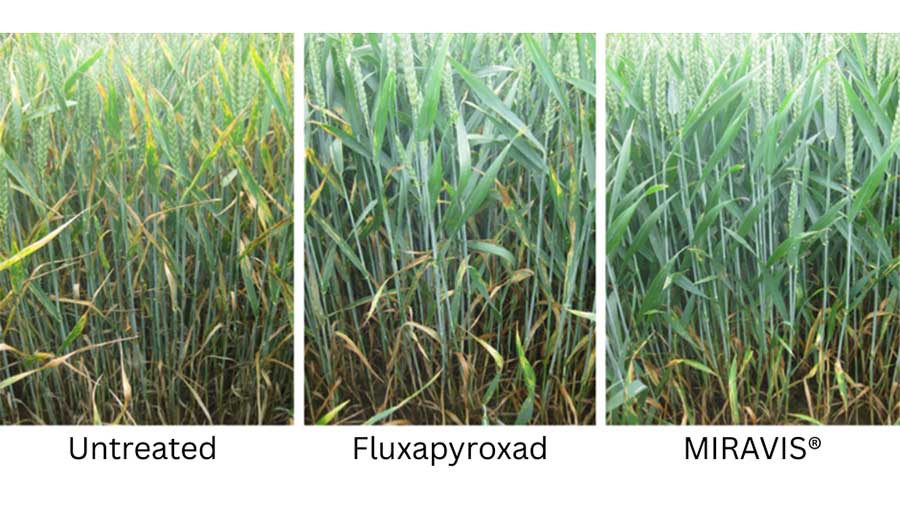
© Syngenta
Superpower plus stamina
As well as its superpower efficacy against septoria tritici, Joe says Miravis Plus + Era has delivered outstanding stamina in protecting green leaf area.
A combination of superpower disease control plus stamina offers greater certainty, he explains.
“Clearly, with such powerful activity against septoria tritici, you’d expect to see a good return on investment from Miravis Plus + Era in a high pressure year for the disease such as 2024.
“However, even when we look back at earlier years, in wheat trials from 2020 to 2023 at like-for-like doses, Miravis Plus treatment gave an average of an extra 0.5 t/ha over fluxapyroxad/mefentrifluconazole in 244 comparisons, and an extra 0.3 t/ha over fenpicoxamid/prothioconazole in 156 comparisons.
“If you take a grain price of £170/t, these differences equate to £85/ha and £51/ha of extra income respectively.
Fusarium and DON
“What’s also useful to note is that a T2 application of a Miravis Plus treatment in wheat has given substantial reduction in Fusarium head blight and DON mycotoxin.
“An appropriate T3 ear fungicide is still key for Fusarium management, but using Miravis Plus + Era in the programme at T2 can increase the likelihood that the T3 fungicide will keep the crop below a DON threshold,” Joe adds.
Learn about the superpower, stamina and certainty of Miravis on the Syngenta website
2. Correct spray timing
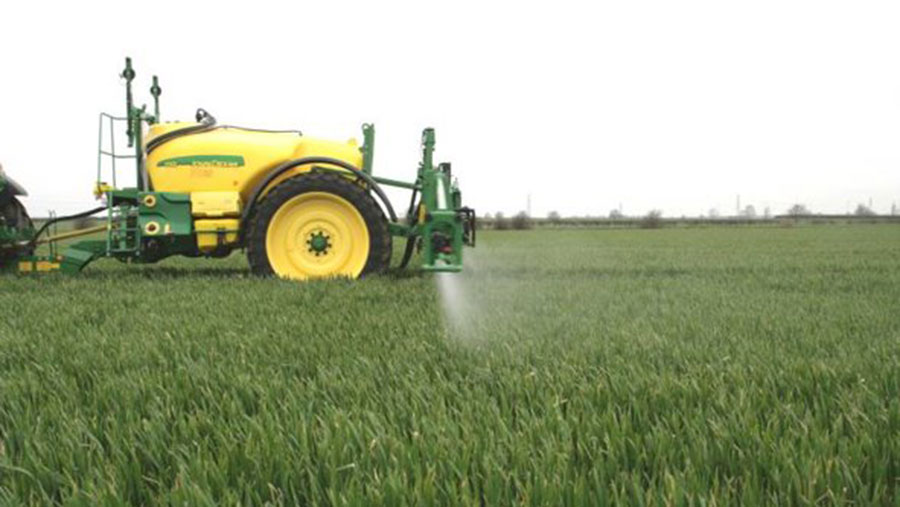
Check crops regularly to get the T2 fungicide timing precisely right in each field © Syngenta
Key to getting the best results with any fungicide is to apply it preventatively against disease, explains Joe.
“The optimum time for the T2 fungicide is typically when the flag leaf is fully emerged, so check crops regularly to get the timing precisely right in each field,” he says.
“If you spray T2 too late, infection can have already started. Each day’s delay in applying the T2 fungicide after growth stage 39 can result in about 70kg of lost yield
“Conversely, if you apply T2 too early, before the flag leaf has fully emerged, the fungicide spray won’t be able to land on the part of the leaf towards the base, leaving this exposed to infection.
“When moisture collects in leaf axils, this is where septoria can start.
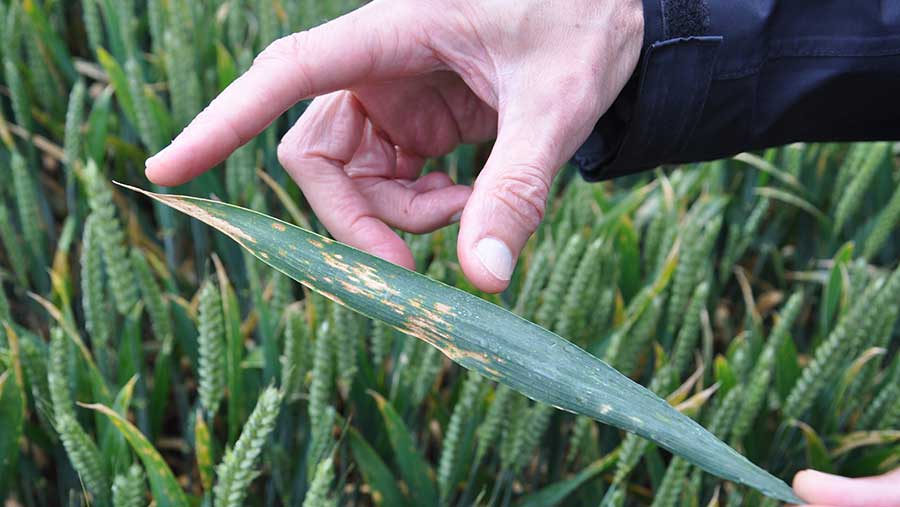
If T2 is applied too late, infection can have already started, Joe says © Syngenta
3. Correct spray application
Similar to when targeting leaf three at T1, upright flag leaves need protecting on both sides, says Joe.
To this end, he says the rearward-facing spray of Amistar nozzles has been designed to help achieve this by countering the forward direction of the sprayer to give more even spray deposition on the front and back of leaves.
“Miravis Plus + Era can be applied through Amistar nozzles in a water volume of 100 l/ha. Used at low pressures, these are 75% drift-reduction nozzles.
“If higher water volumes are being used to improve penetration of the spray into the crop canopy, don’t do this by raising the spray pressure as this will produce finer droplets that are more likely to drift.
“Instead, consider 90% drift reduction nozzles, such as 3D ninety nozzles, using at least 200 l/ha of water. Reducing drift can help to open up more spray days to maximise the chance of spraying on time.
“Effective T2 protection to maximise yield isn’t only important for achieving the best possible return from your grain price, it’s also important in order to ensure a return from the investment made in growing the crop so far.”
See more Syngenta application guidance on the Syngenta website
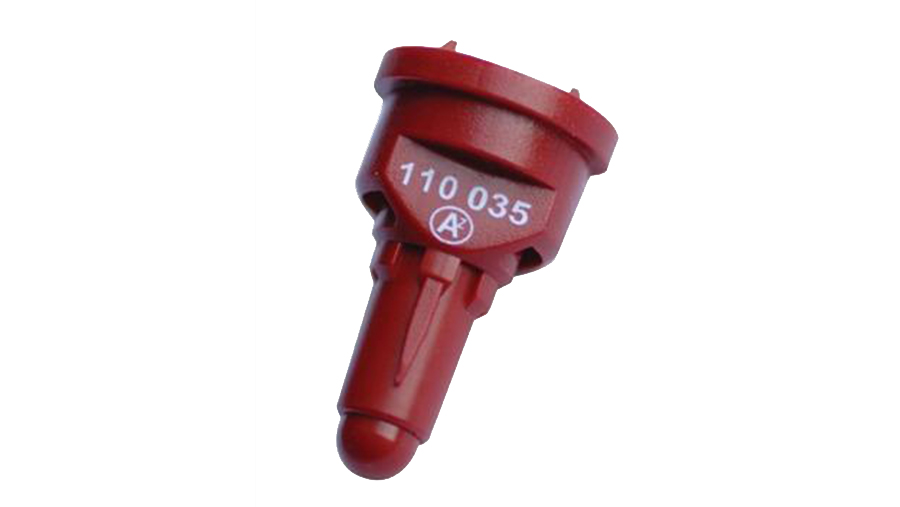
Amistar nozzles have been designed to give more even spray deposition on the front and back of leaves © Syngenta
Find out more about successful disease management on the Syngenta website
AMISTAR®, ELATUS® Era, MIRAVIS® Plus, EraTM and the Syngenta logo are trademarks of a Syngenta Group Company.
AMISTAR® (MAPP No: 18039) contains azoxystrobin, ELATUS® Era (MAPP No. 17889) contains benzovindiflupyr and prothioconazole. MIRAVIS® Plus (MAPP No. 20847) contains pydiflumetofen. EraTM (MAPP 19792) contains prothioconazole.
All other brand names used are Trademarks of other manufacturers in which proprietary rights may exist.
Use plant protection products safely. Always read the label and product information before use.
For further product information refer to www.syngenta.co.uk
Provided by
Syngenta is one of the world’s leading agricultural companies, comprising of crop protection and seeds. Our ambition is to safely help feed the world while taking care of the planet.
